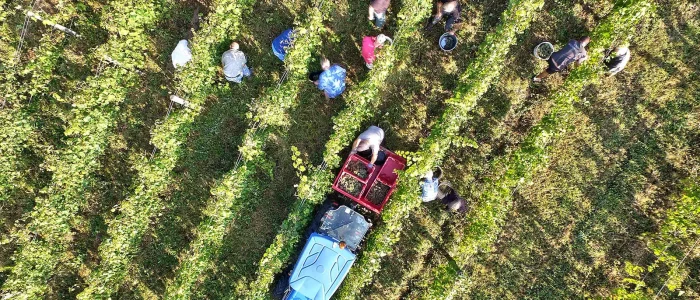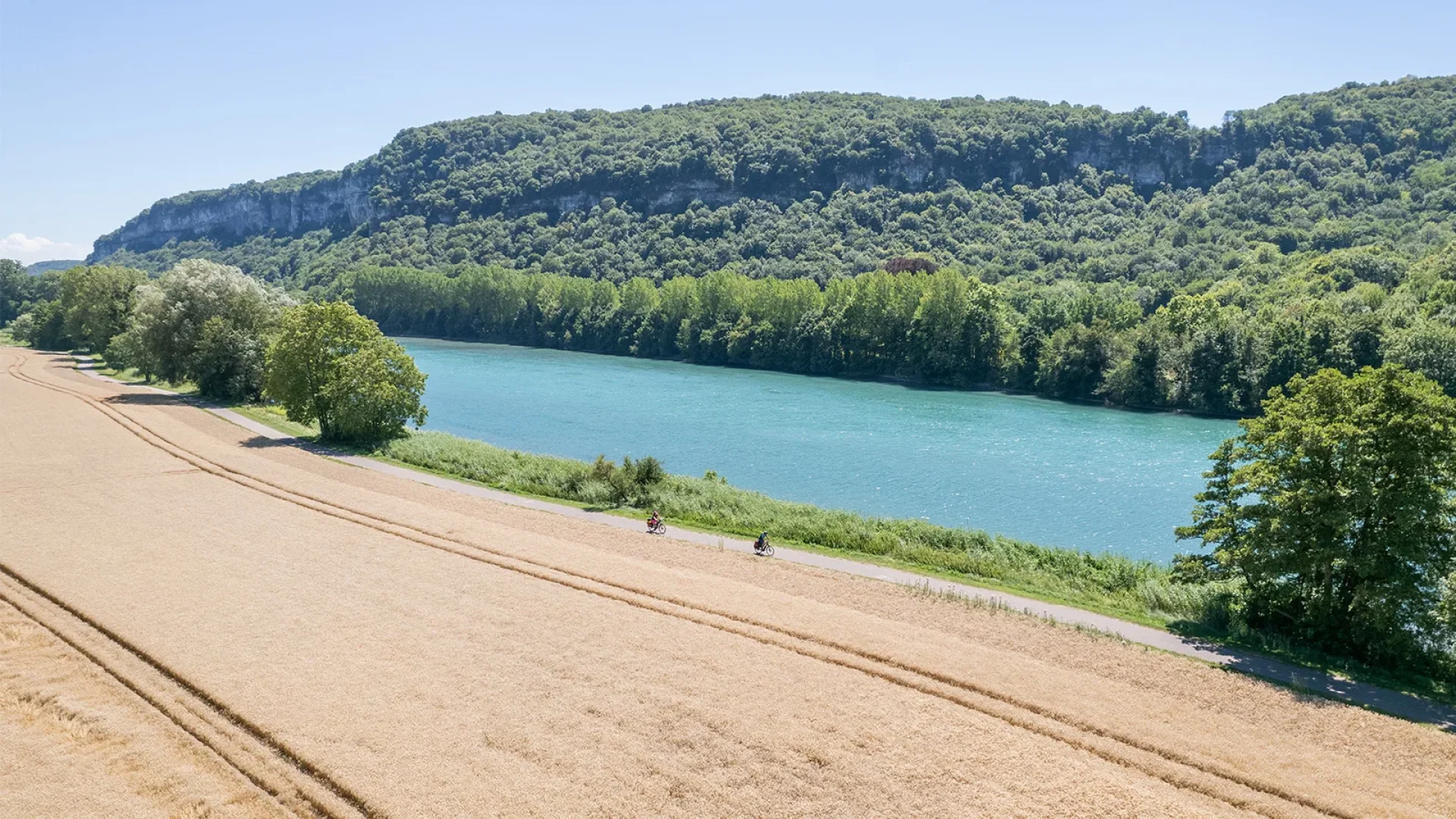Discover some essential stages on the 70 km of the ViaRhôna at the Balcons du Dauphiné! Between ideal natural spaces for a picnic break, historical sites for “cultural” breaks and leisure bases where you can give it your all… It’s up to you to choose your stops!
1 – Meander of the Saugey
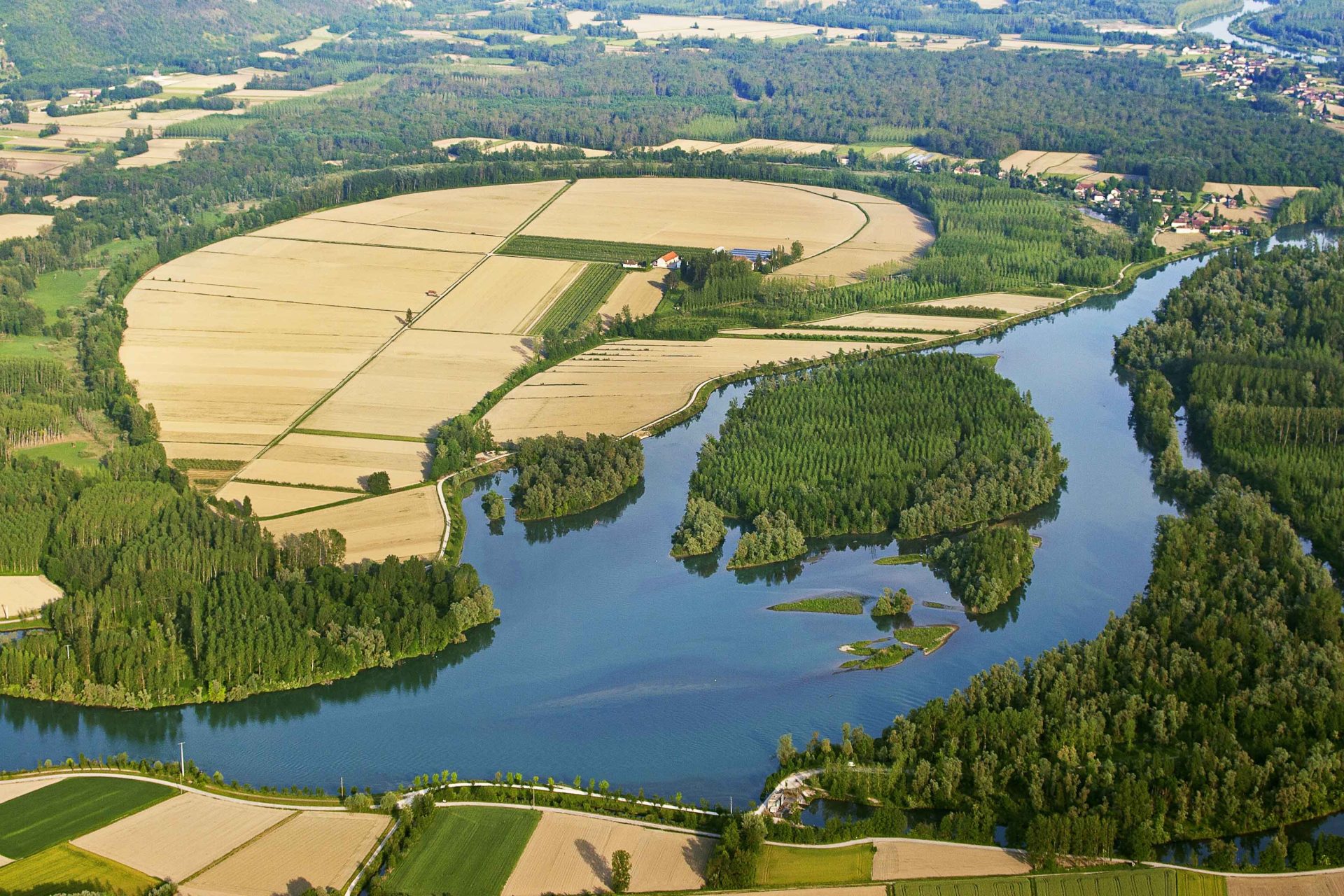
You will start your cycling journey in the middle of nature, at the meander of the Saugey located in the town of Brangues. This meander is, in fact, neither more nor less than a dead arm of the Rhône and is part of the National Natural Reserve of the French Haut Rhône.
The site hosts a wide variety of environments: ash willows, reedbeds, etc. More than a dozen remarkable plants have been identified there, including the marsh hottonia, the fluke buttercup, the small naiad, the guinea fowl fritillaria. There are also more than 80 species of birds: little egret, hobereau falcon, purple heron, kingfisher... Just to know who is hiding behind these poetic names, we want to stop!
On the way to stage 2, stop in the village of Brangues known to be a land of literature since the castle of the Claudel family is located there and because the news item that inspired the most famous Stendhalian novel… “Red and Black” of course!
2 – ENS Laurentière Forest
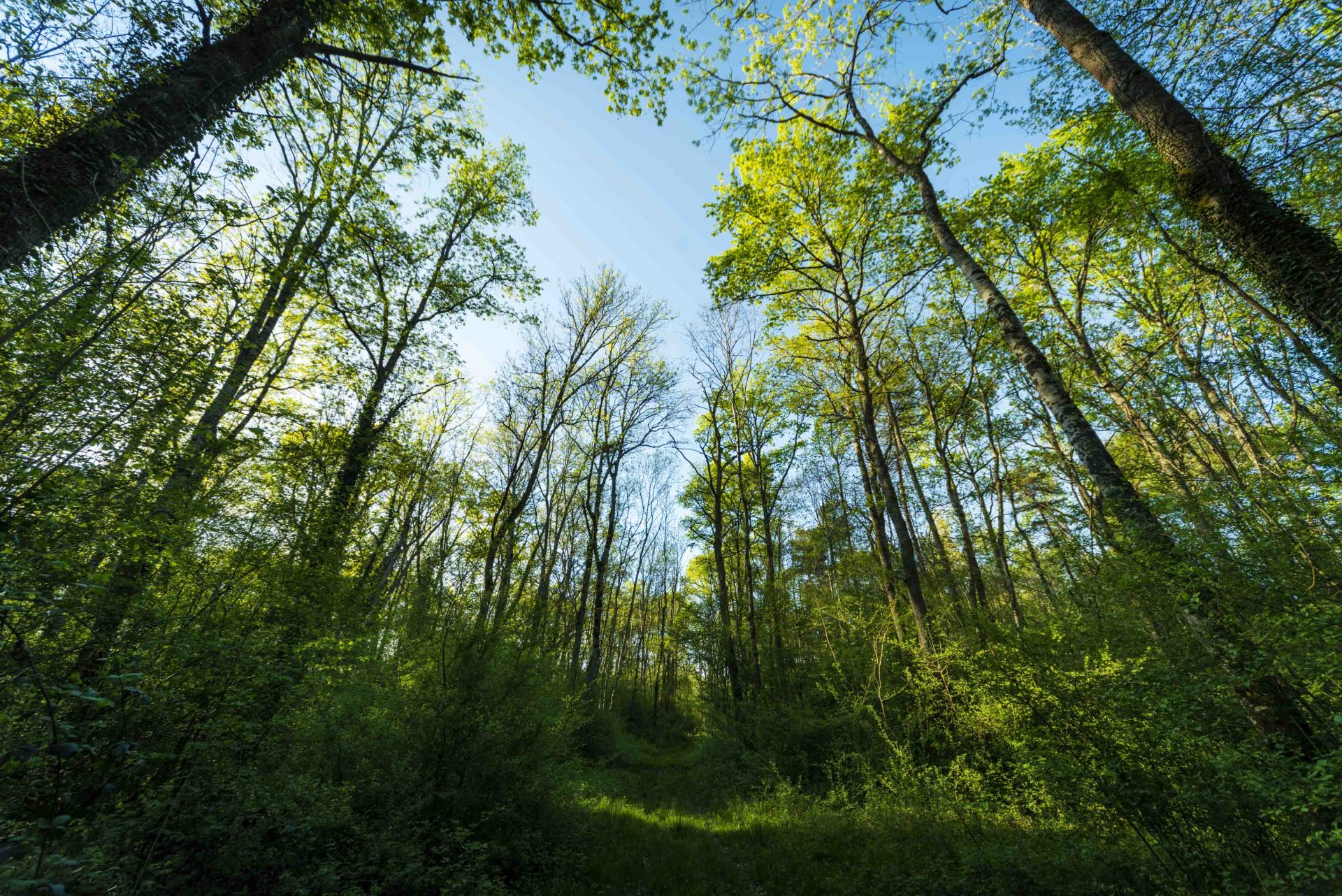
Go zou for stage 2, towards the Espace Naturel Sensible de la Forêt de la Laurentière. You can stop for a 2 km walk on a marked route with no elevation gain to discover the remarkable flora and fauna of this listed site. Which of the black woodpecker or the agile frog, will you have the chance to meet?
3 – Morestel, city of painters
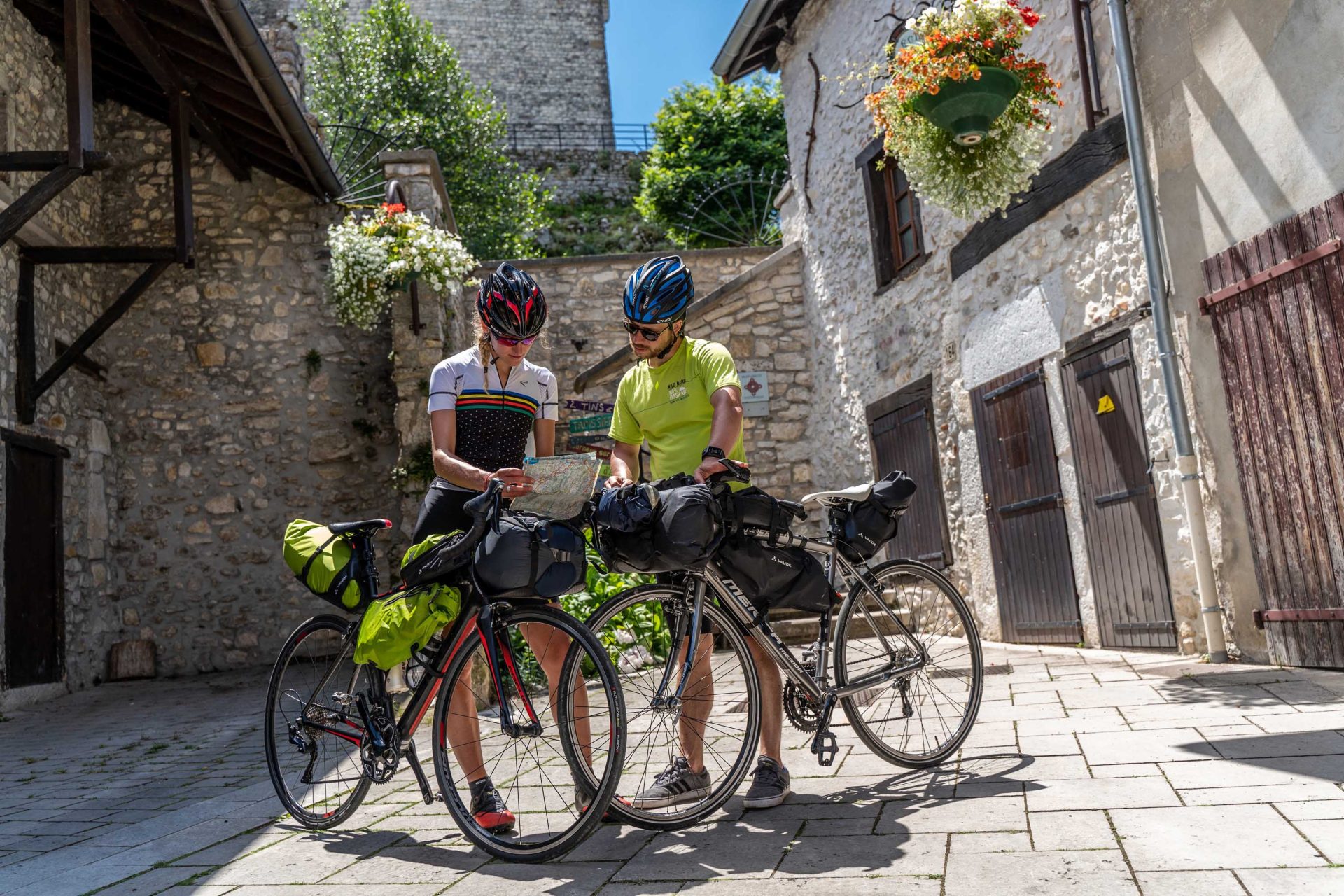
Once your bicycle is on again, head for Morestel, the city of painters. The beautiful flowered area dominated by the majestic XNUMXth century medieval tower will make you see all the colors both by the richness of its architectural heritage and by its painting galleries and its Ravier house, last home of the eponymous landscape painter.
4- ENS de la Save (Save, Passins, Serre) and the Regional Nature Reserve of Mépieu
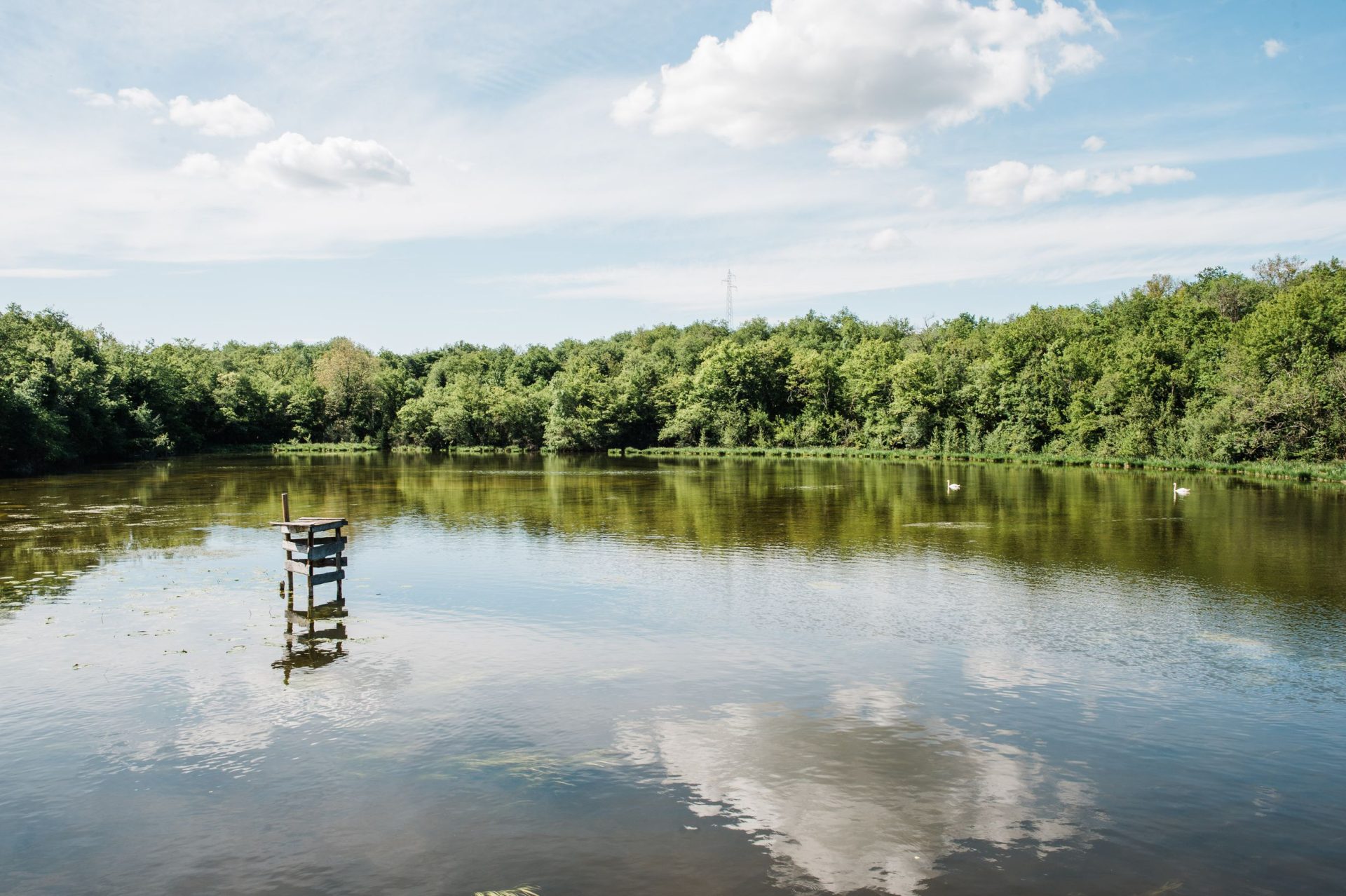
Want to go back to nature? Stage 4 takes you to the three Serre ponds, located in the towns of Courtenay and Arandon-Passins. This natural area of 42 ha also consists of woods, reed beds and hedges whose strong environmental richness has enabled it to integrate the European Natura 2000 network as well as the Sensitive Natural Area of the Sava. Nearby, be sure to stop off at the Mépieu ponds Regional Nature Reserve where no less than 700 plants and a thousand species of animals have been identified, including the tree frog, a protected species... And what else? The pretty pond turtle too!
5 – Quirieu
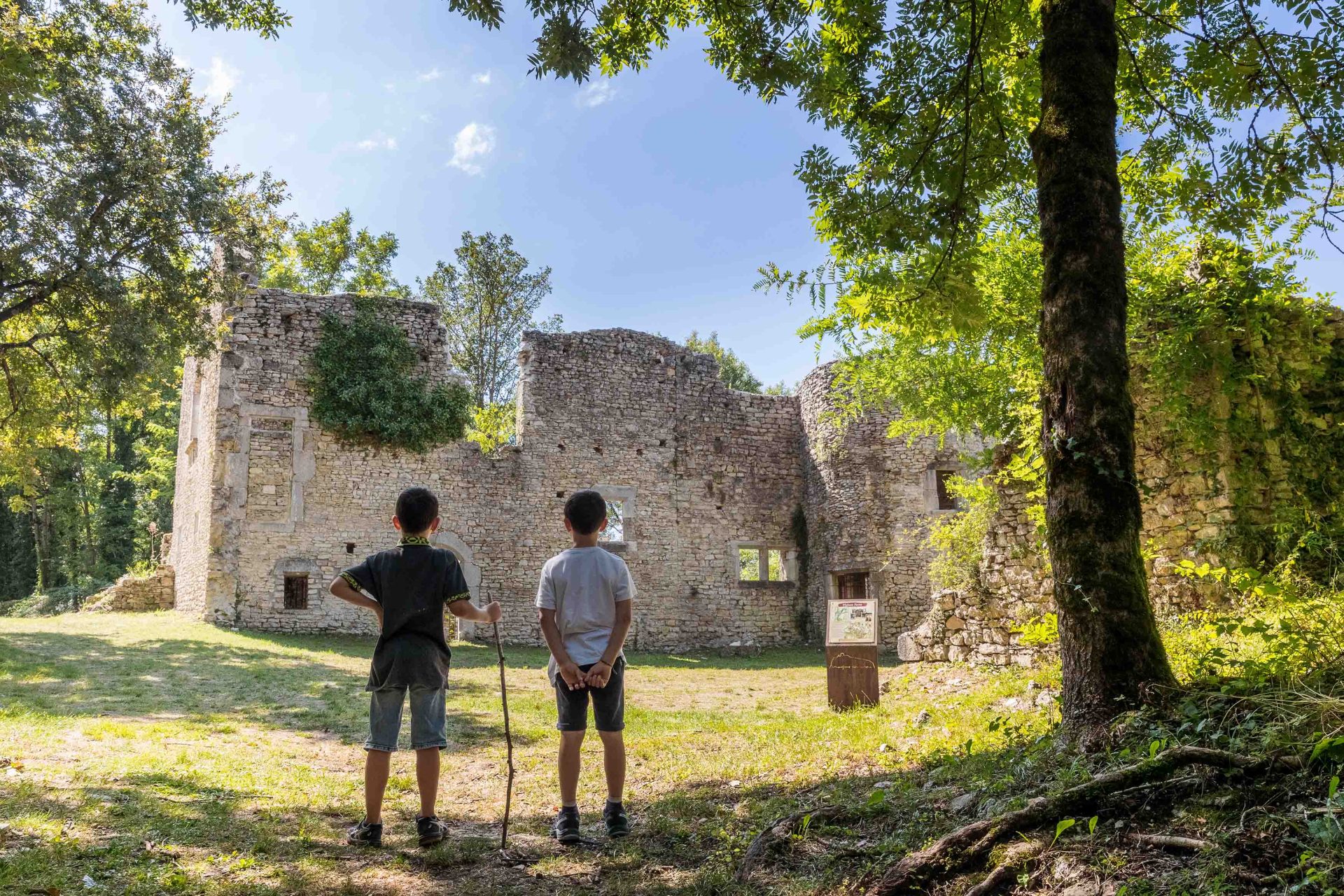
Stage 5 will take you towards the medieval site of Quirieu, whose ghostly remains stand in the middle of nature. Do not refuse yourself a stroll through its small paths or its cobbled streets. As you walk, you will discover a chapel, a fortified house and here and there pretty dry stone walls. You will also benefit from an incomparable view of the Rhône. And if of the castle of yesteryear, there remains today only a vast esplanade, the calm of the site will invite you to restore life and splendor to it through the imagination.
6 – Blue Valley
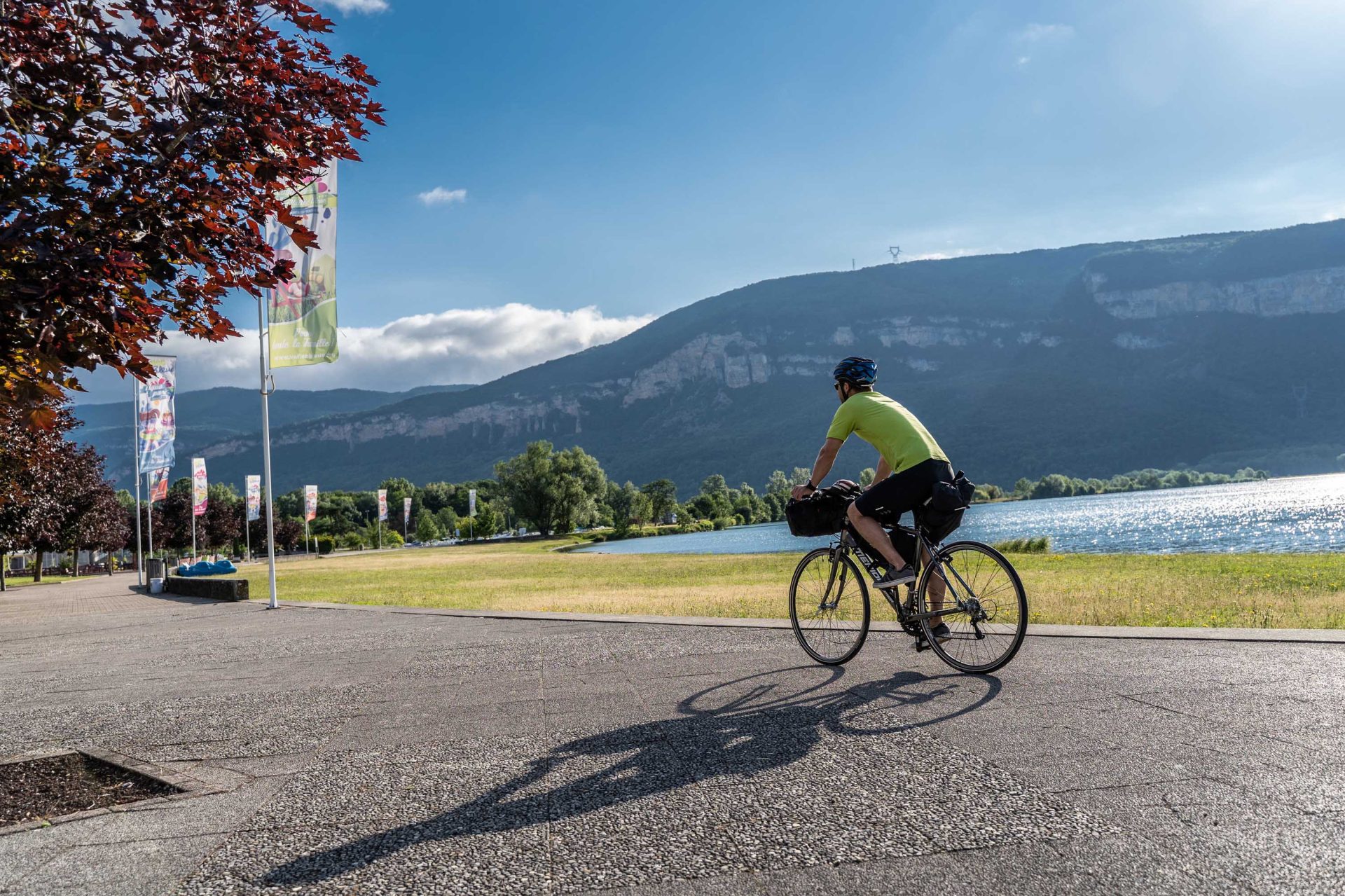
After the meditative contemplations, we set off again in the direction of the Blue Valley. If you are walking with the family, the Vallée Bleue aquapark in Montalieu-Vercieu will be an almost obligatory stopover. It is also a privileged place for classic or new boating with its famous amphibious cars. Good laughs in perspective…
7 – Isle of the Greenhouse
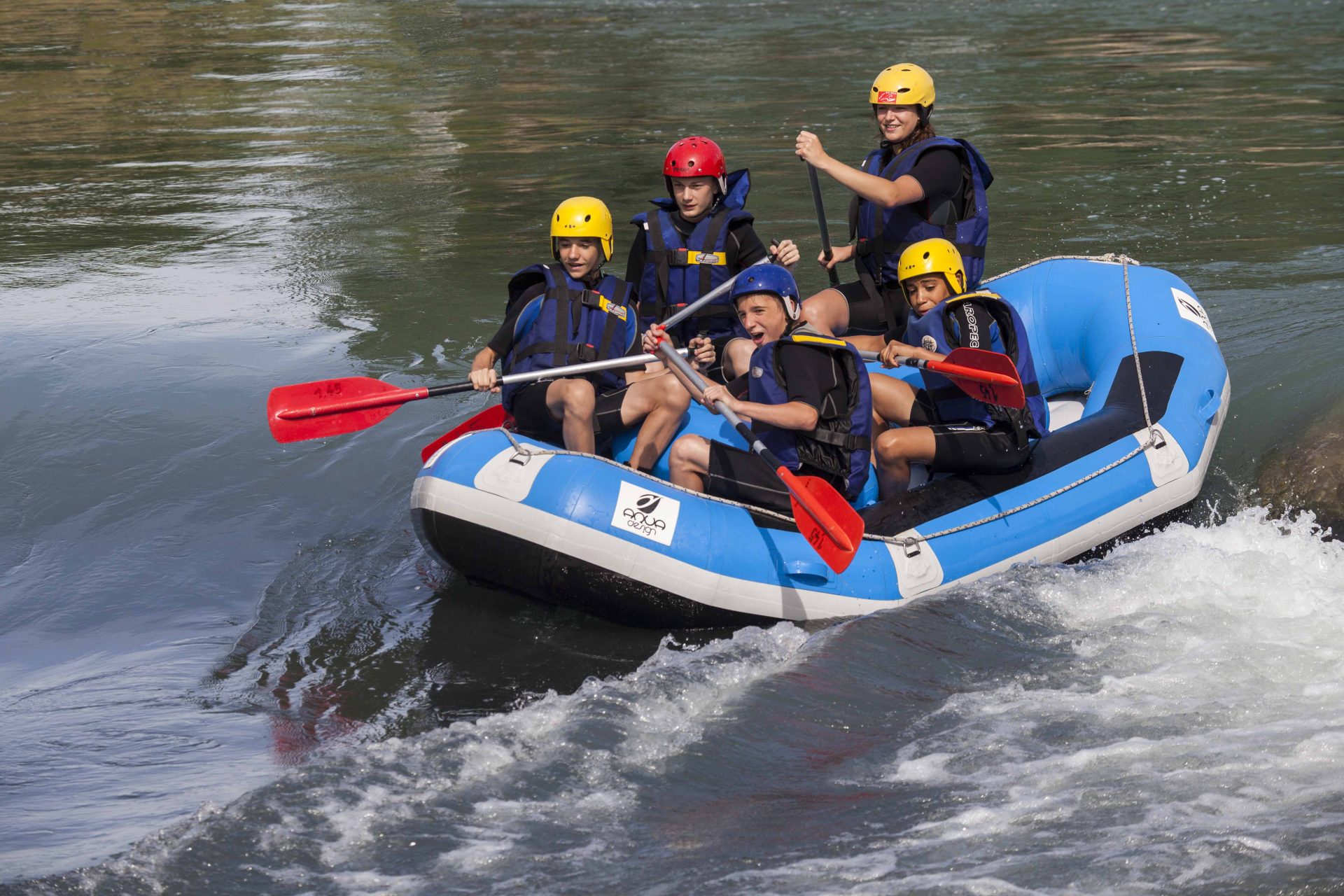
And for an even more splashy stage, go to "L'espace Eau Vive" on Isle de la Serre next door where on a 600-meter artificial river at the Pont de Sault-Brénaz, you can choose to try kayaking, canorafting, rafting or hydrospeed!
8 – Vertrieu
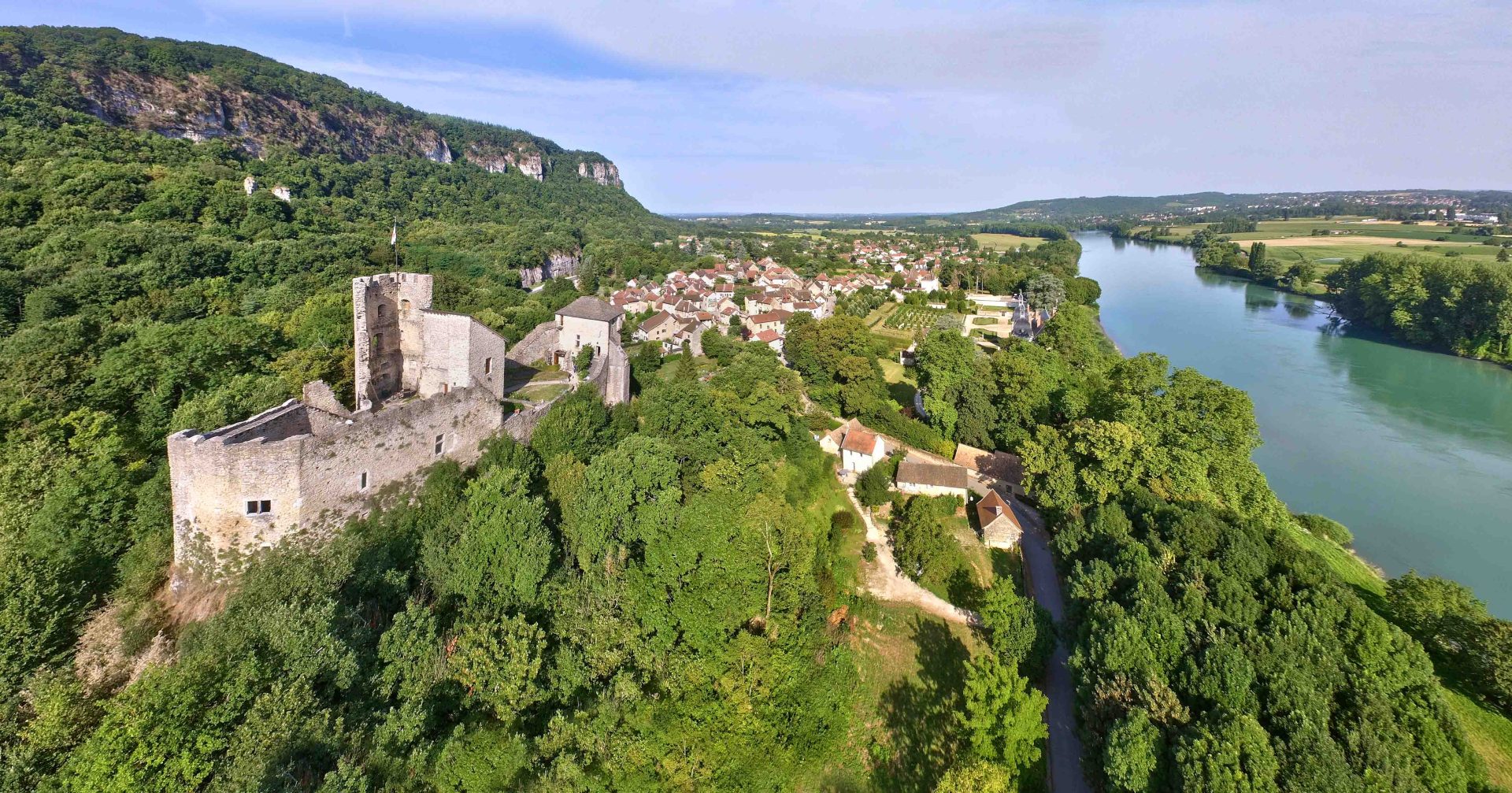
After this sporty stopover, stage 8 will take you to the beautiful village of Vertrieu, the northernmost town in the department, nestled in the hollow of a loop of the Rhône, opposite the Bugey mountains. Vertrieu also developed its port activity very early on, whether for the trade in agricultural products or for the transport of stones to Lyon. You can also admire one of the oldest fortified houses in the territory, a XNUMXth century castle and many other marvels that make this village so unique and absolutely attractive!
9 – The Caves of La Balme
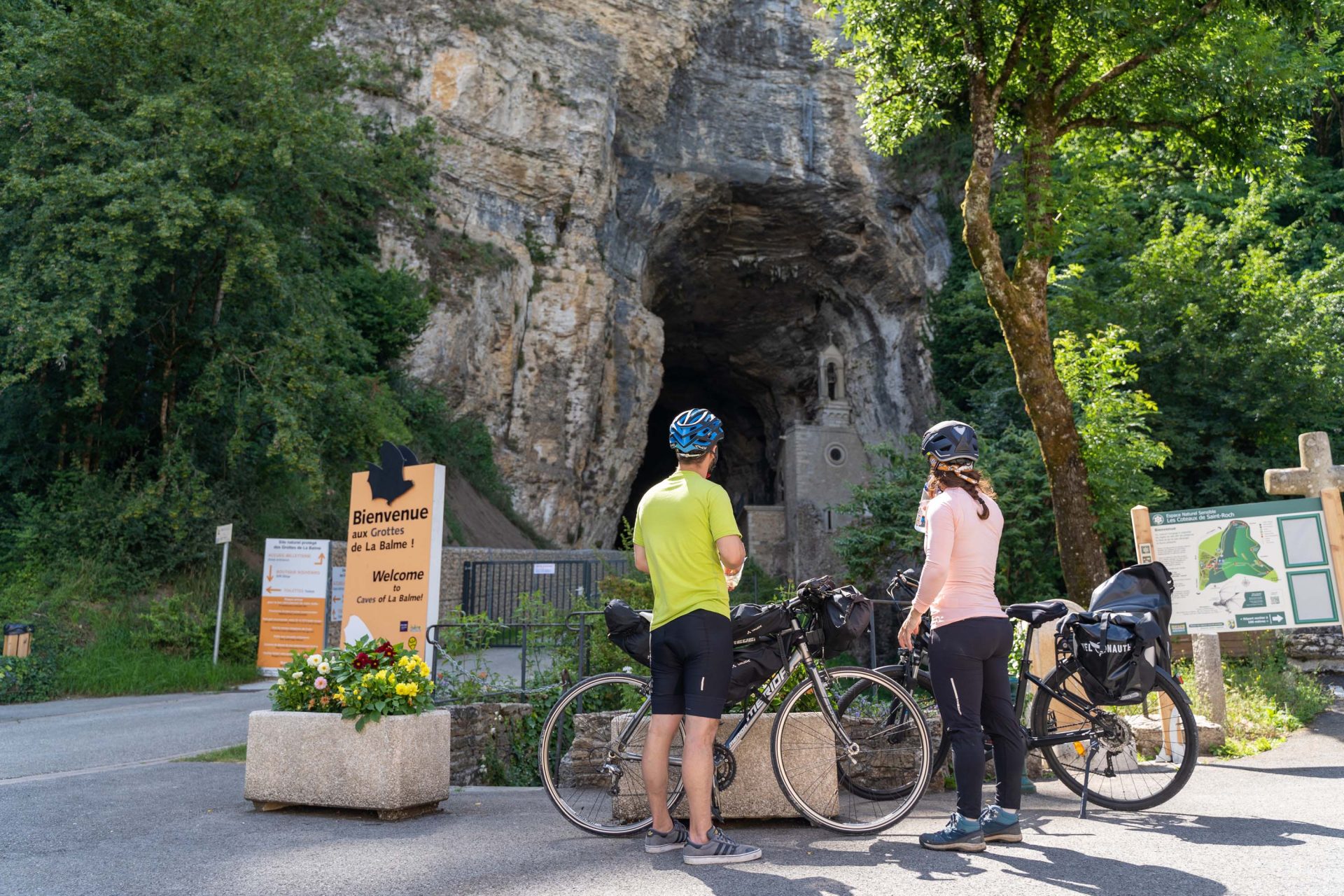
We agree, we cannot venture on the ViaRhôna and not stop at the Grottes de la Balme! So, step 9, dare the inner adventure in its natural labyrinths with underground lake, amphitheater of water basins, stalactites and stalagmites throughout 1000 meters of underground galleries. Mazette! And on the way out, a walk on the free path of the Sensitive Natural Area "Les Coteaux de Saint-Roch" (Natura 2000 area) will ideally complete your day...
10 – Archaeological site and plateau of Larina

For this penultimate stage, the archaeological site and the plateau of Larina overlooking the village of Hières-sur-Amby and the surrounding plain are available to you. Occupied since prehistoric times, this site presents the restored remains of a vast rural estate from late antiquity and the Merovingian period. Farm buildings, habitats, chapel and necropolis are the subject of an interpretation trail that a visit to the heritage house, in the heart of the village below, can nicely complete.
11 – Vernai archaeological site
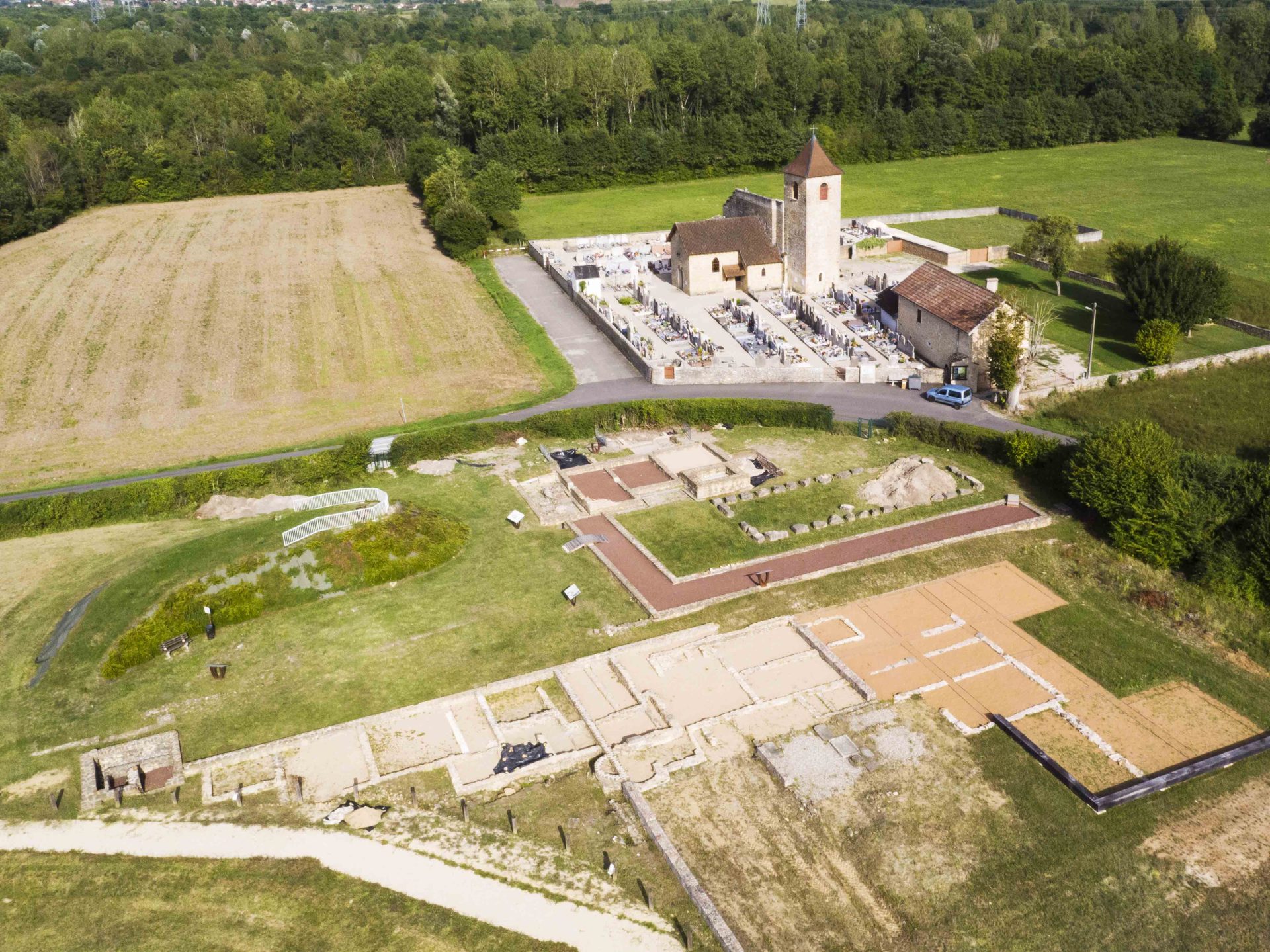
And for stage 10, direction Saint-Romain-de-Jalionas about ten kilometers away. You will discover the incredible heritage of the Vernai site, a little away from the village. Here are preserved the vestiges of a vast Gallo-Roman villa where part of the thermal baths, a hydraulic mill, a granary and the habitat of the manager of the domain have been restored. After a phase of prosperity covering the entire Roman era, the villa disappeared in the 100th century to make way for another farm associated with a chapel at the origin of the current church. You will also learn that Saint-Romain-de-Jalionas had a dolphin castle in the XNUMXth century which was destroyed at the end of the XNUMX years war!
